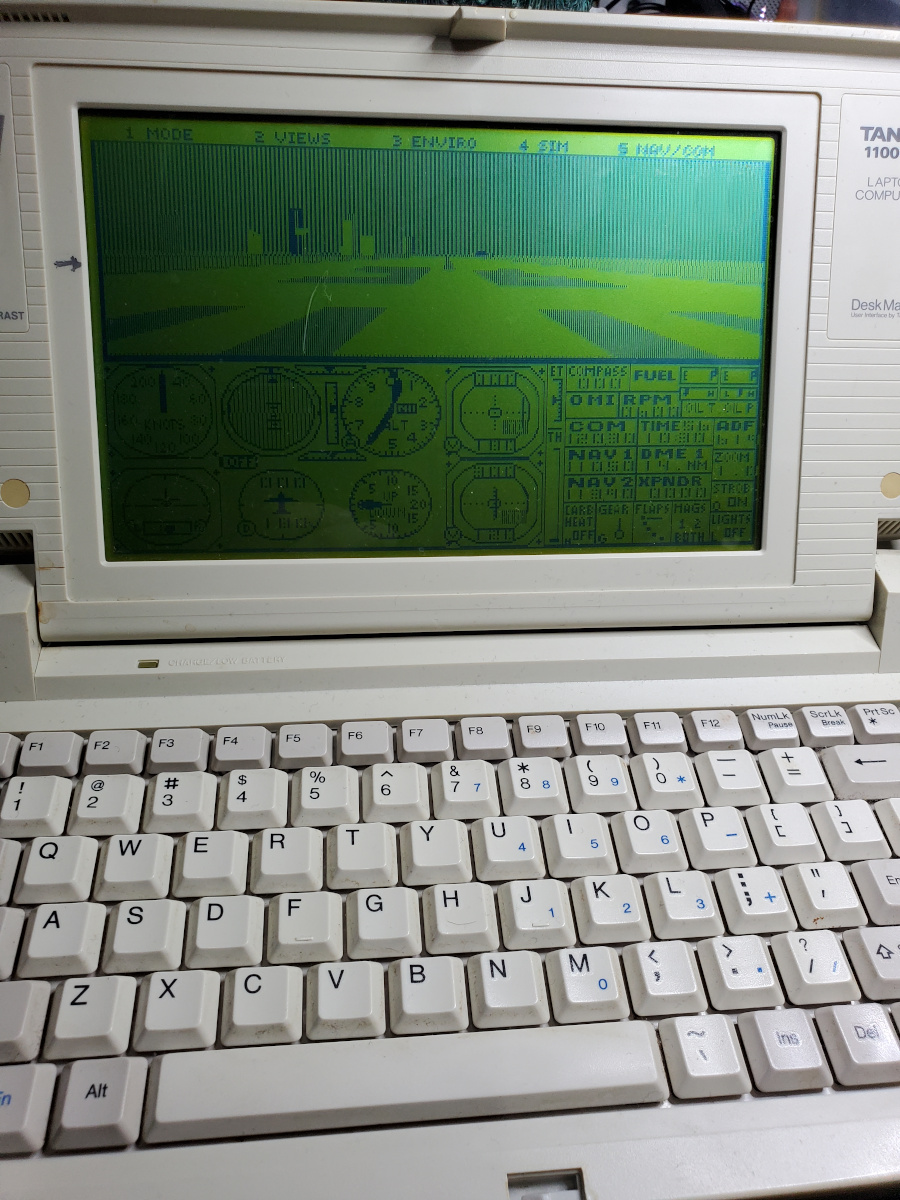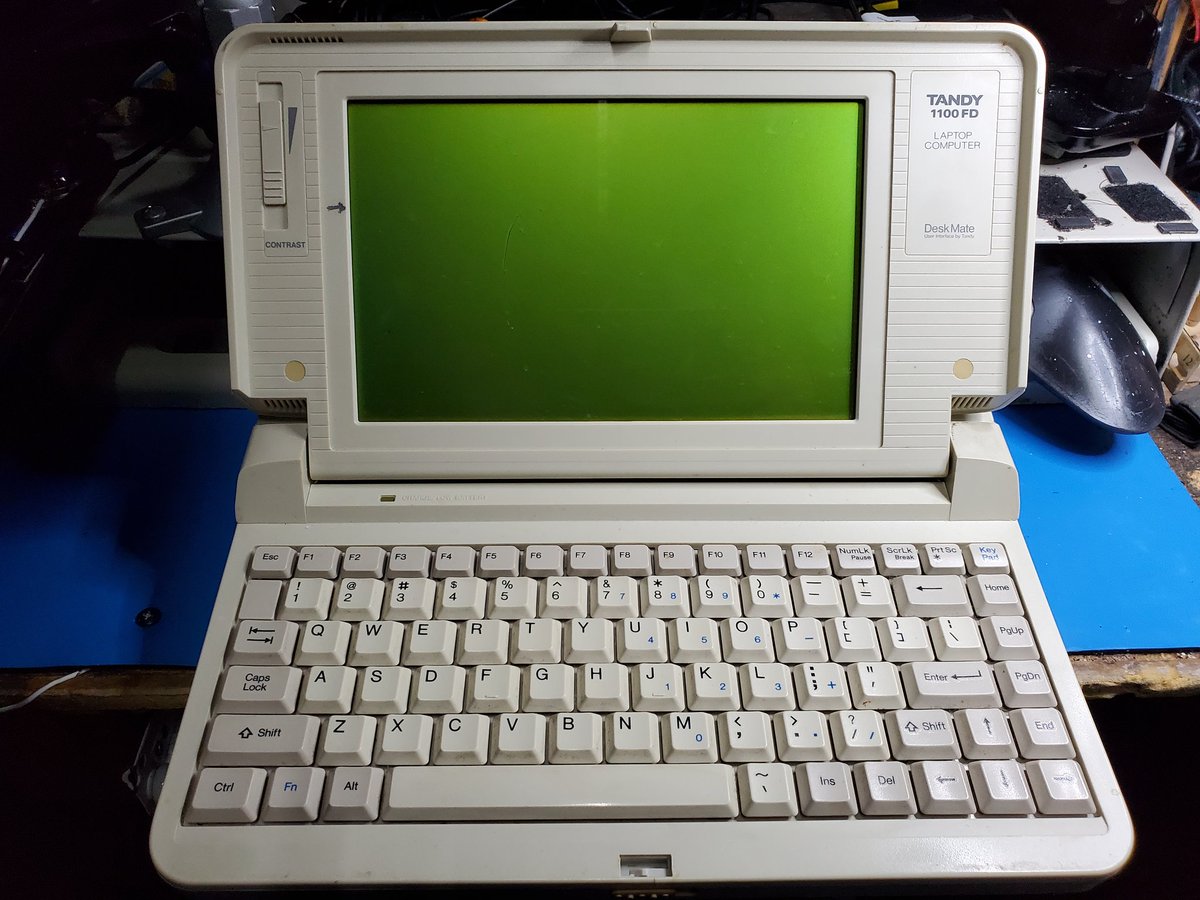

1. Introduction
| CPU | NEC V20 10MHz |
| RAM | 640KB |
| Video | Monochrome CGA-Compatible |
| Floppy | Gotek floppy emulator |
| Ports | RS-232/DE-9, Parallel/DB-25 |
This information pertains to a particular specimen and may reflect upgrades, repairs, modifications, or factory options not present by default.
This was an immediate buy based on its relatively low price at the time, coupled with its monochrome LCD screen which deeply appealed to our sensibilities. Our childhood fondness for the Tandy brand may have also been a factor.
Connectivity is limited and the 8088-alike CPU puts this among the bottom rungs of PC performance. On the other hand, the OS in ROM simplifies some things and makes it a quaint machine for word processing.
2. Clock Crystal Replacement
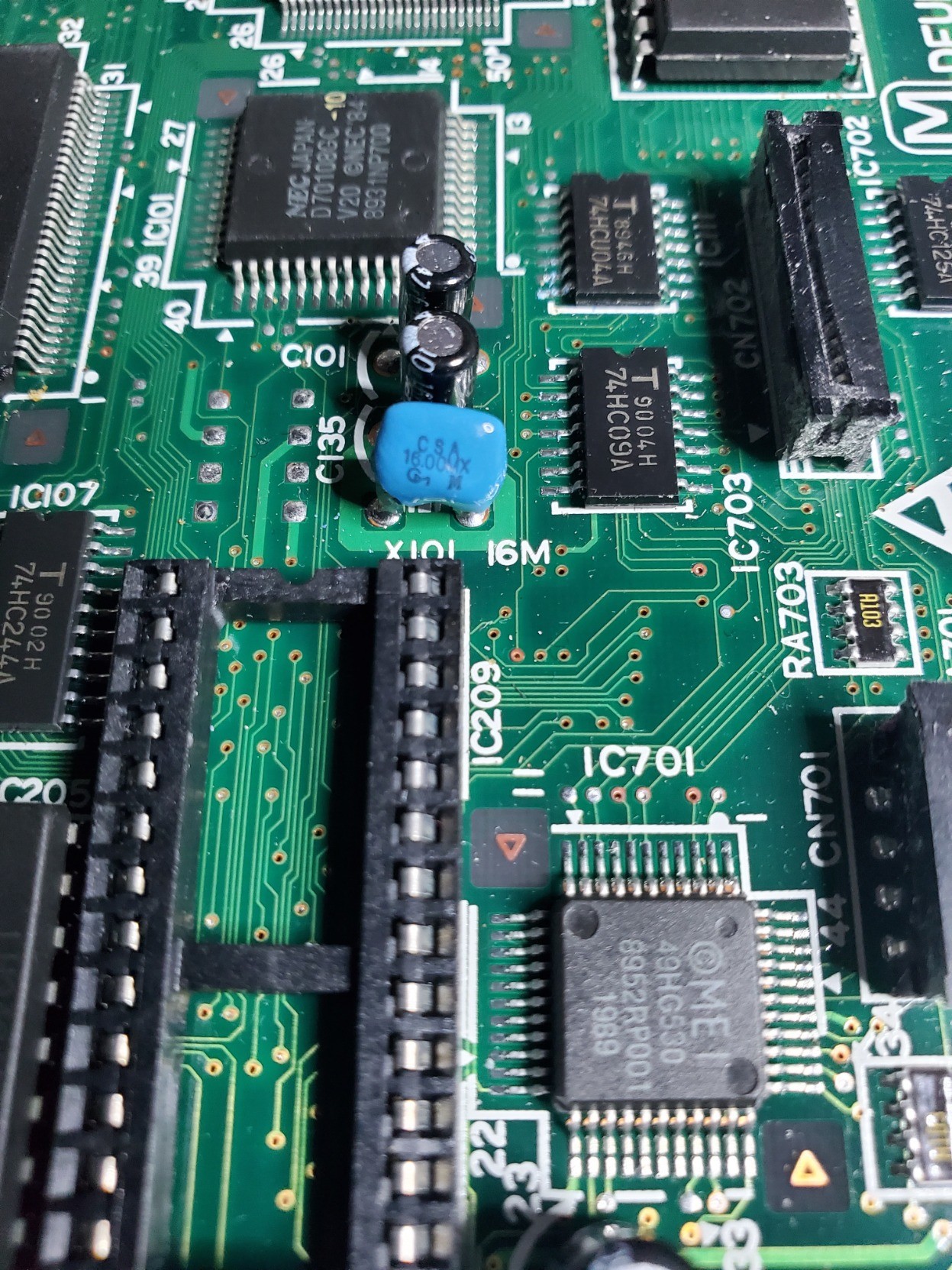
For a while, we thought we had fried the ROM chip by attempting to read it with our TL866. It turned out to be a chip that the TL866 did not support, and the 1100FD failed to boot once we put it back together...
As it turns out, on closer inspection, we had broken a 16MHz ceramic oscillator next to the ROM socket. While we weren't able to find an identical part, we replaced it with a common quartz crystal oscillator (the little tin-can-type) and now it boots again!
3. Gotek Floppy Emulator
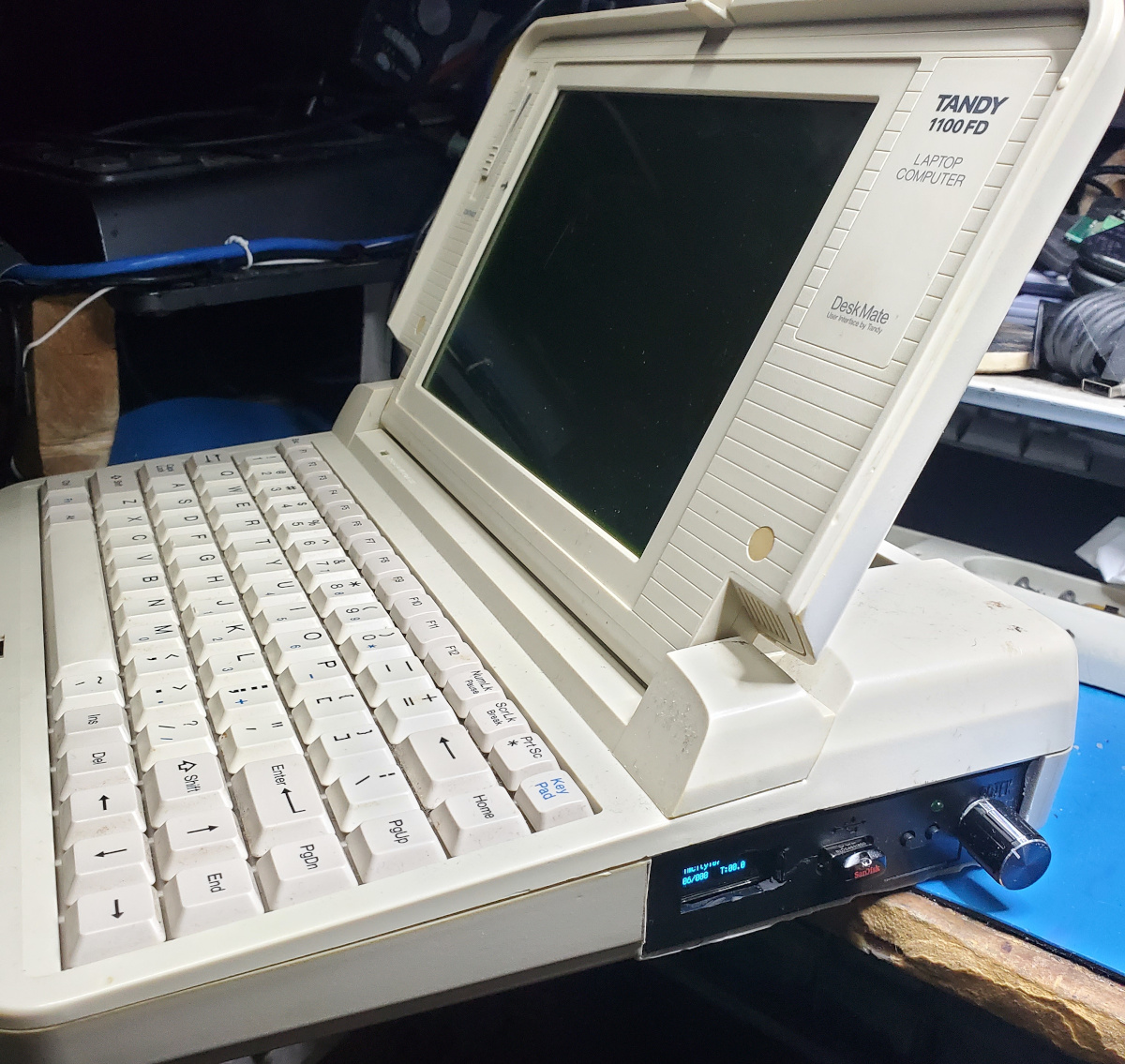
Through hints in various forums, we learned it might be possible to replace the internal floppy drive with a more modern Gotek floppy emulator through the use of a 34- to 24-pin adaptor. The floppy drive mount holds a standard-size floppy drive, though the front bezel had to be cut out with a Dremel. It's a tight fit, but it *does* fit!
One snag that we got caught on was the jumper configuration: S1 must be closed and S0 must be open! If the drive is not responding to DOS commands, this may be the issue.
Once the floppy emulator is connected, please also keep in mind that it can only load up to 720k-sized images. HD floppies are not supported by the controller on the 1100FD.
4. Screenshots
Similar to the HP 200LX, this machine has a monochrome LCD with no backlight. This unit is also CGA-compatible, though it is quite a bit larger than the 200LX.
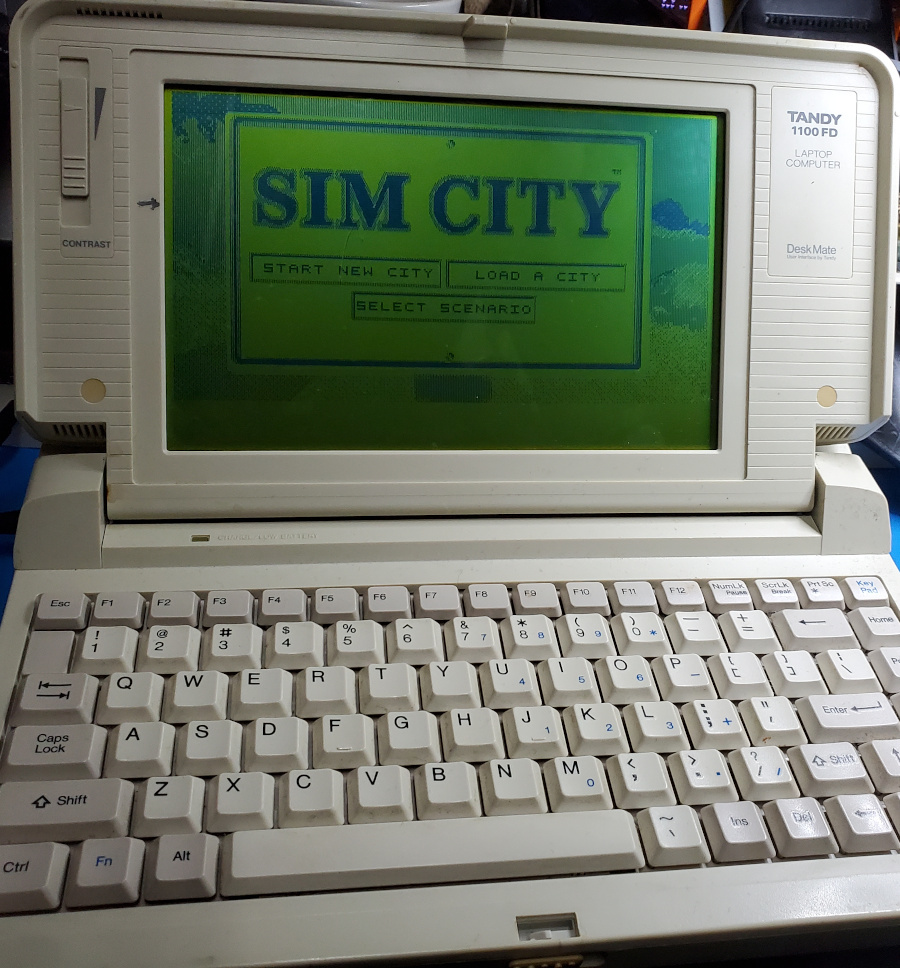
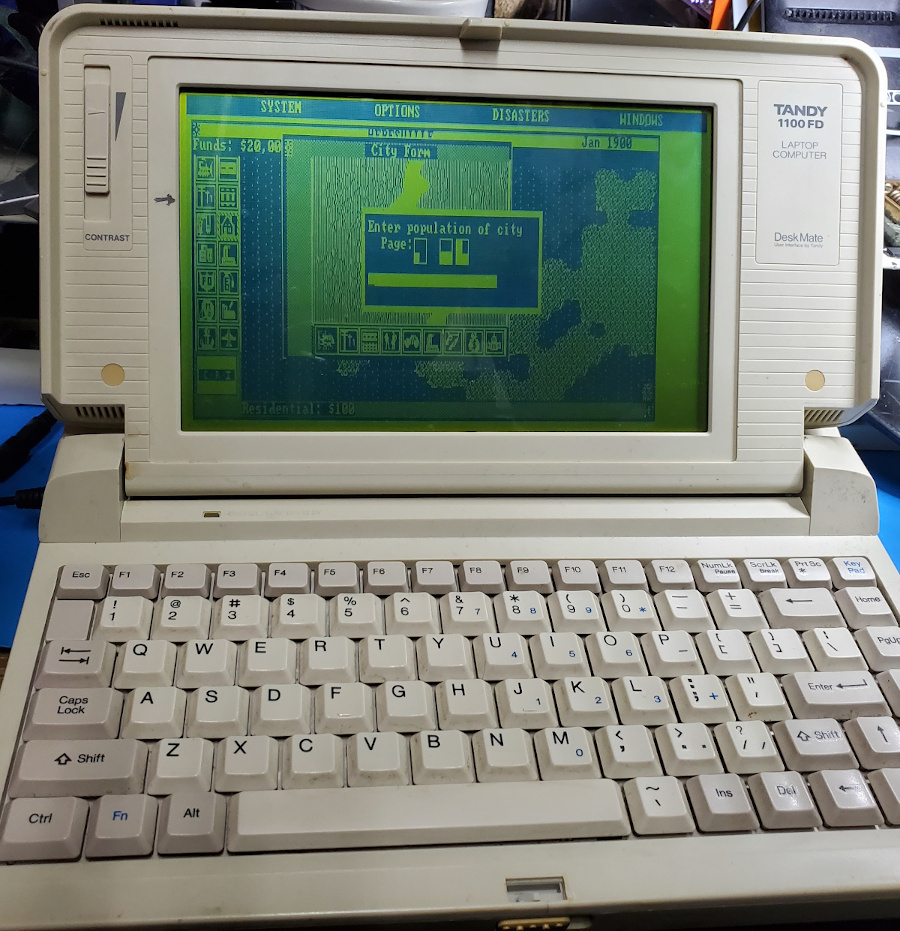
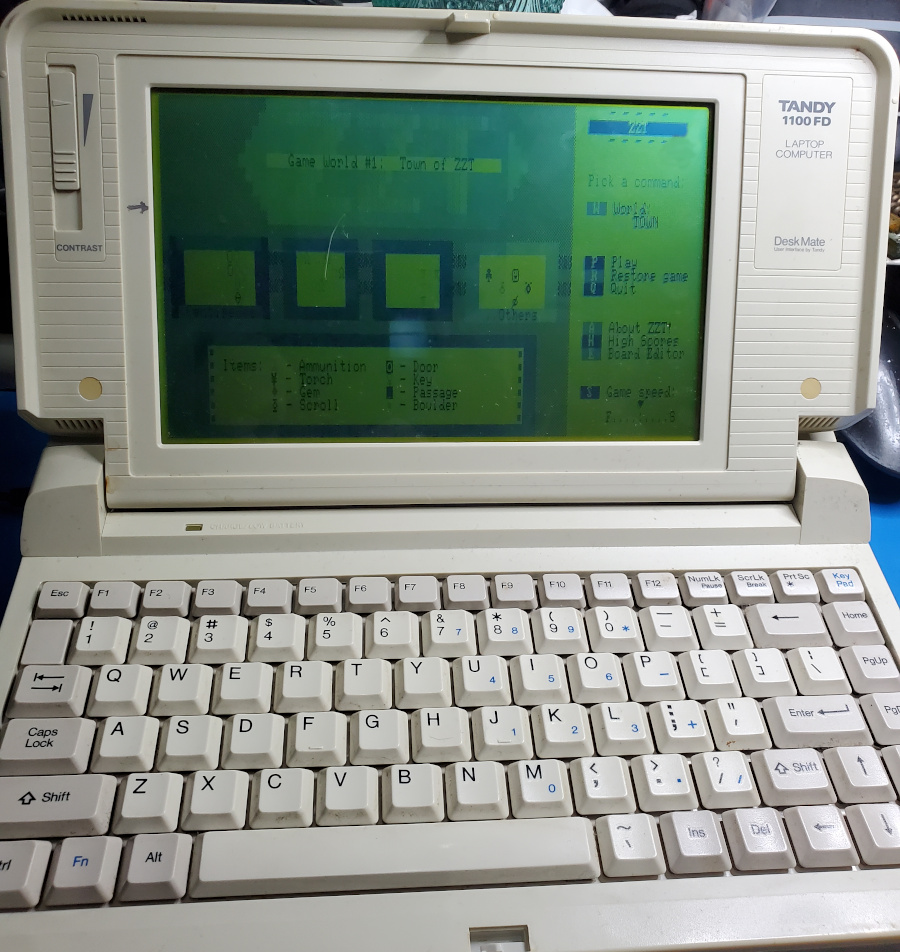
![Tandy 1100FD displaying the ZZT mouse/keyboard select prompt. Some of the text is very light.] Tandy 1100FD displaying the ZZT mouse/keyboard select prompt. Some of the text is very light.]](/images/t1100fd/zzt-config.jpg)
